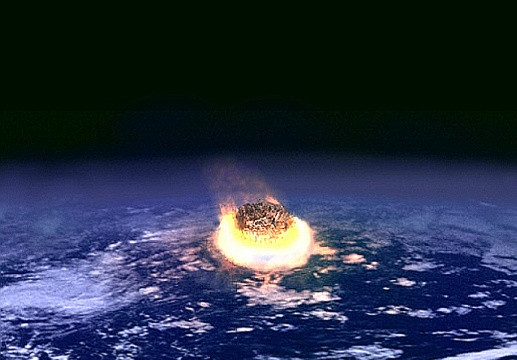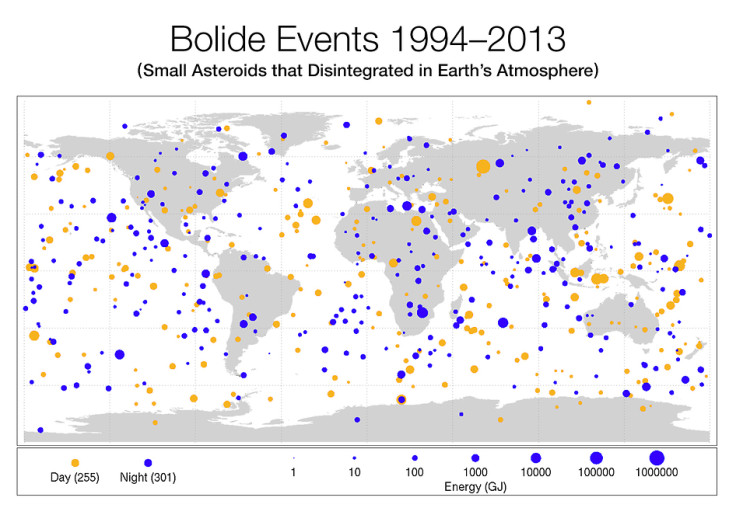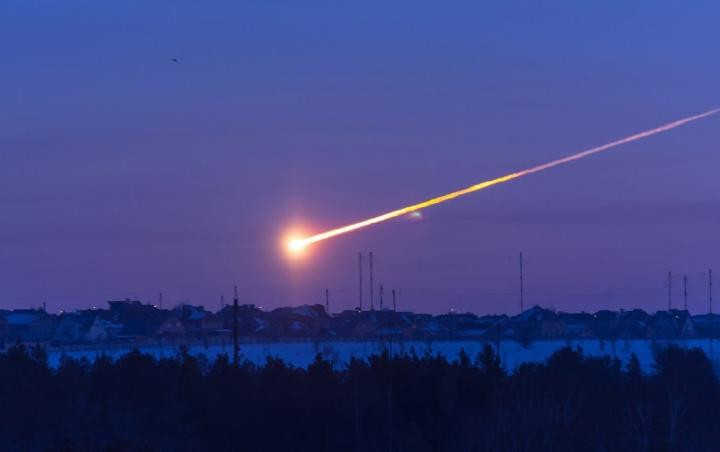Massive asteroid collision with Earth is inevitable - and we have never tested the technology to prevent it
Technologies to divert asteroids have yet to be tested.

A leading astrophysicist has warned that it is just a matter of time before an asteroid collides with Earth.
Alan Fitzsimmons from Queen's University Belfast has said it was not a matter of if but when such a collision would happen.
"Asteroids have hit the Earth throughout its history and will continue to do so in the future. The rate at which they hit the planet depends on their size. Asteroids the size of the object that helped kill the dinosaurs are really rare and happen only about every 100 million years," Fitzsimmons told IBTimes UK.
"However, asteroids like the one that hit Tunguska in Siberia in 1908 are more common, happening every 200 to 300 years. They are smaller, but they can still cause significant damage."
A similar asteroid strike now could potentially destroy an entire city. Although astronomers have made great progress in detecting near-Earth asteroids and understanding the threat posed by them, a number of challenges still remain.
How serious is the risk of Earth being struck by an asteroid?
Astronomers who research asteroids have a range of sources at their disposal to estimate the impact frequency of asteroids of different sizes. These include studying craters on the Earth and on the moon, historical records as well as satellite data.
Here on Earth, we are bombarded by space rocks every day, though most of them don't make it to the ground and burn up when they pass through the atmosphere.
For an asteroid to cause damage on the ground, it has to be quite big, at least 20 metres across. The risk of being hit by an object that size or greater is low, because these objects are extremely rare, and would probably not make it in one piece to the surface.
"I think it is common to think of an impacting asteroid as a very large object, but impacts by large asteroids are very rare because large asteroids themselves are relatively rare. It is many times more likely that the Earth is hit by an asteroid that is relatively small than by an asteroid that is relatively large because small asteroids are many times more numerous. Indeed, the Earth is hit by very small objects every day", Hugh Lewis, Senior Lecturer in Aerospace Engineering at the University of Southampton, told IBTimes UK.
"Impacts on the Earth by objects that are about 10 kg in mass occur about once every day, but impacts by objects that are 1,000 kg occur probably 10 times a year. It is very unlikely that objects of this size would reach the Earth's surface and we'd see them as a bright shooting star or fireball, technically known as bolides."

The larger objects that do make it through to the surface occasionally can be quite damaging. Perhaps the most recent example of this is the 2013 Chelyabinsk bolide, approximately 20-metre near-Earth asteroid that entered Earth's atmosphere over Russia on 15 February 2013.
"Even if they don't make it to the surface in one piece, these are the kind of objects that can cause damage. About 1,500 people were injured, mostly by the shockwaves of the object entering the atmosphere," Fitzsimmons said.
A research paper published by Lewis and colleagues backed up this idea that an asteroid does not have touch the surface to be damaging to humans. In a research paper, the scientists showed that the consequences of an airburst (where the asteroid explodes in the atmosphere) are significant.
How are near-Earth asteroids monitored?
Telescopes are used around the world to survey the sky every night to look for Near-Earth asteroids. Once one is identified, it is monitored for a few days until astronomers can calculate its orbit around the Sun - and thus assess whether it will come close to Earth in the future.
"Essentially, we are watching it move along a small arc of its orbit, so we can extrapolate from this arc to the full orbit – it won't be a perfect prediction of the orbit, however. Once we have an estimate of the orbit we can propagate it forwards in time to see if the orbit crosses the Earth's orbit. Again, there will be uncertainty in how the asteroid orbit will evolve over time. Because of the uncertainty in our knowledge of the orbit, scientists can only provide a probability of an impact," Lewis explained.
The problem is that while scientists know a lot about the Earth-threatening large asteroid population (those larger than 1 km across), their knowledge is much more limited when it comes to smaller asteroids - in particular those asteroids that are smaller than 100m across.
"As a result, we can only make impact predictions for asteroids that we have observed, but the most likely scenario is that the Earth is hit by an asteroid that we haven't observed, because it is small, and because small asteroids are much more numerous than large asteroids," Lewis added.
"The most worrying event for me was the Chelyabinsk bolide in February 2013 because it was an example of the most likely asteroid-impact scenario: an asteroid we had not detected in advance. In addition, the estimates of the size of the asteroid (17-20 m across) put it into a category that we would arguably have said would cause no damage on the ground. Nevertheless, there were damage and injuries as a result."

Space agencies like NASA regularly update the list of known asteroids that may be likely to hit the Earth.
What can be done against threatening asteroids?
"When we study an asteroid and find there is a significant chance it going to hit Earth in the next 100 years or so, the idea will be to try to change its orbit. Scientists have developed technologies to do so, but to know whether they work or not they will have to be tested," Fitzsimmons said.
One of the methods modelled by scientists is known as the 'Kinetic impactor', which would involve sending a large high-speed spacecraft in the path of an approaching asteroid in an attempt to change its path. The other possible method is known as 'gravity tractor' would involve diverting the asteroid using the gravity of a large spacecraft.
Although a lot of space agencies have worked on this subject, these methods have never been tested due to a lack of funding.
© Copyright IBTimes 2025. All rights reserved.






















